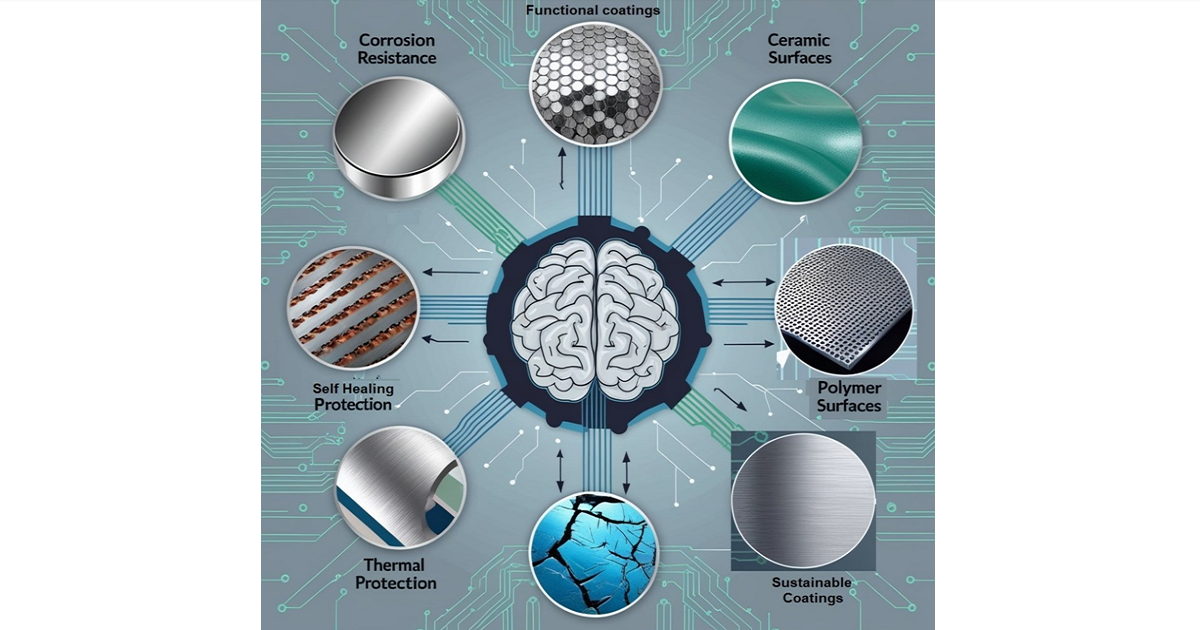- 2.8Impact Factor
- 5.4CiteScore
- 15 daysTime to First Decision
Machine Learning-Driven Advancements in Coatings
Special Issue Information
Dear Colleagues,
Coatings are essential in protecting, enhancing, and extending the lifespan of materials across a wide range of industries, from aerospace and automotive to electronics, healthcare, and beyond. These coatings provide requisite functions such as corrosion resistance, thermal insulation, and surface modification, making them indispensable in ensuring the durability and performance of materials under diverse conditions. The integration of machine learning (ML) into the field of coatings presents unprecedented opportunities for innovation and advancement, driving a significant shift in how we approach the design, development, and application of these materials. In essence, machine learning represents a powerful tool that can revolutionize coatings.
This Special Issue will serve as a comprehensive platform for showcasing the latest research, developments, and applications of ML in the field of coatings, drawing contributions from academia, industry, and research institutions. It will focus on the expansive role of machine learning in advancing coatings, covering a wide range of particular topics including, but not limited to, the following:
- Machine learning for material discovery in coatings;
- Application of ML for optimizing deposition techniques;
- ML-driven approaches for assessing mechanical properties of coatings;
- ML models for predicting coating durability and lifespan under various conditions;
- Smart and responsive coatings;
- Application of ML for the design and development of smart coatings;
- Application of ML in the development of multifunctional coatings;
- ML approaches to tailoring surface texture and morphology of coatings;
- ML-driven techniques for developing new anti-corrosive and anti-fouling coatings;
- Case studies of ML-enabled functional coatings in industrial applications;
- Development of eco-friendly coatings using ML techniques.
Prof. Dr. Ali Khalfallah
Prof. Dr. Zohra Benzarti
Guest Editors
Manuscript Submission Information
Manuscripts should be submitted online at www.mdpi.com by registering and logging in to this website. Once you are registered, click here to go to the submission form. Manuscripts can be submitted until the deadline. All submissions that pass pre-check are peer-reviewed. Accepted papers will be published continuously in the journal (as soon as accepted) and will be listed together on the special issue website. Research articles, review articles as well as short communications are invited. For planned papers, a title and short abstract (about 250 words) can be sent to the Editorial Office for assessment.
Submitted manuscripts should not have been published previously, nor be under consideration for publication elsewhere (except conference proceedings papers). All manuscripts are thoroughly refereed through a single-blind peer-review process. A guide for authors and other relevant information for submission of manuscripts is available on the Instructions for Authors page. Coatings is an international peer-reviewed open access monthly journal published by MDPI.
Please visit the Instructions for Authors page before submitting a manuscript. The Article Processing Charge (APC) for publication in this open access journal is 2600 CHF (Swiss Francs). Submitted papers should be well formatted and use good English. Authors may use MDPI's English editing service prior to publication or during author revisions.
Keywords
- machine learning in coatings
- smart coatings
- functional coatings
- predictive modeling
- self-healing coatings
- sustainable coatings
- surface engineering
- corrosion resistance
- ceramic surfaces
- polymer surfaces
- thermal protection
- wear protection
- process optimization
- data-driven coating design

Benefits of Publishing in a Special Issue
- Ease of navigation: Grouping papers by topic helps scholars navigate broad scope journals more efficiently.
- Greater discoverability: Special Issues support the reach and impact of scientific research. Articles in Special Issues are more discoverable and cited more frequently.
- Expansion of research network: Special Issues facilitate connections among authors, fostering scientific collaborations.
- External promotion: Articles in Special Issues are often promoted through the journal's social media, increasing their visibility.
- e-Book format: Special Issues with more than 10 articles can be published as dedicated e-books, ensuring wide and rapid dissemination.

